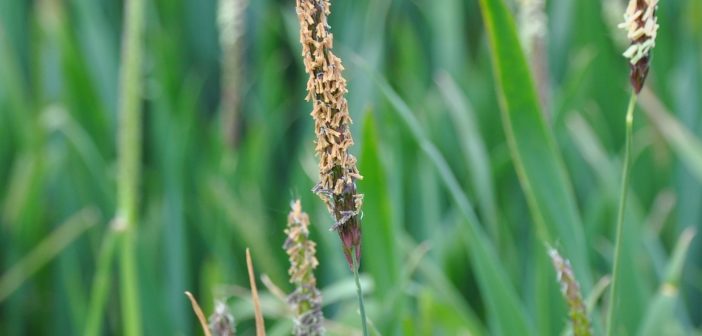Benchmarking of crop performance plus use of big data to identify farming practices that deliver genuine benefits could become increasingly important as arable farms face continued grain price volatility, uncertainty over farming support and increasing technical challenges, says leading agronomy firm, ProCam.
“Without proper benchmarking of yields and margins against the best-performing crops in the country, growers don’t have a reference point as to what is achievable,” says ProCam managing director, John Bianchi.
“Similarly, without broad acre knowledge of how different crops and agronomic techniques perform, it is extremely difficult to identify which should be employed on your own farm. Benchmarking and big data help better inform year-to-year and day-to-day agronomy decisions.”
Pointing to results of ProCam’s own 4Cast benchmarking database, which has 17 years of analysable data and has just had latest results from the 2016 harvest added, Mr Bianchi says findings confirm just how large the gap between typical and the top 25% of crops can be.
Even average winter wheat yields on 4Cast have consistently tracked above the UK DEFRA average over the last 17 years, he says, but 4Cast growers in the top 25% have averaged substantially higher still – at over 2 t/ha above the UK DEFRA average.
“In addition, big data from 4Cast often reveals surprise findings on the effects of agronomic techniques on crop performance,” adds Mr Bianchi, “some of which are highly relevant for this autumn.
“As an example, we’ve seen that you don’t necessarily need to spend more to improve yield and gross margin. Also, delaying drilling, up to a point, and switching to minimum tillage may not be detrimental to yield, and there is a clear case for growers not to turn away from winter oilseed rape.”
Expanding on these areas, ProCam’s technical director, Dr Tudor Dawkins, and head of crop production, Nick Myers, say the latest harvest 2016 results show the top 25% of winter wheat growers on 4Cast spent less per hectare on variable costs than the average, yet achieved higher yields and around £200/ha higher gross margin.
“There was little difference in the split between the types of sprays the top 25% used,” says Mr Myers. “However, with their higher yields, their costs per tonne spent on seed, fertiliser and sprays were all lower. This all suggests the extra gross margin was down to attention to detail. We know that making the right day-to-day agronomy decisions and using accurate timings can make a big difference.
“Perhaps linked to this, results from last season suggest the top 25% of growers were happier to start drilling later, with the peak number of fields drilled occurring well after 8 October, compared with before 8 October for the average. Yet the top 25% still managed to finish drilling earlier.”
According to Dr Dawkins, with the top 25% growers also producing the highest yields and gross margins, this could be an encouraging learning point this autumn for growers facing blackgrass.
“There is natural concern with drilling later that it will reduce yield,” says Dr Dawkins. “But the benefits, in terms of a lower yield penalty from having less blackgrass emerging in the crop, could far outweigh this. “What’s also interesting is that results from 4Cast show the changes in UK cultivation practices that have occurred, and how these impact on yield.
“Over the last 17 years, ploughing has clearly been decreasing and non-inversion minimum tillage increasing but average yield data from 4Cast for the last 14 years showed wheat yields were slightly higher after non-inversion tillage than after ploughing on all soil types – heavy, medium and light.
“This is another example of how costs and efficiency can be improved based on big data – because non-inversion tillage is not only cheaper but also allows more timely land preparation,” he adds.
In addition, Dr Dawkins and Mr Myers say there is strong evidence from 4Cast that growers shouldn’t adopt a knee-jerk reaction of dropping winter oilseed rape from rotations, just because neonicotinoid seed treatments have been lost.
The area of oilseed rape amongst 4Cast growers has been falling since 2012, but for harvest 2016 4Cast figures showed it was more profitable than winter wheat and the most profitable of 11 different crops examined, they point out. It has also been the most profitable break crop compared with peas, beans and spring oilseed rape over the vast majority of the last 17 years, they note.
“Growing winter oilseed rape as a previous crop has also consistently improved winter wheat yield over the last two years on 4Cast,” adds Dr Dawkins.
“Growers will be questioning whether to plant winter oilseed rape because of the challenge of preventing cabbage stem flea beetle eating into crop emergence with the loss of neonicotinoid seed treatments. However, results show clearly that winter oilseed rape not only has the potential to be a highly profitable crop in its own right but also to bring a yield uplift to the following winter wheat crop.
“Benchmarking and big data help you assess these types of wider benefits. They obviously need to be used in conjunction with agronomy knowledge and experience, but they provide a sound starting point,” he adds.




